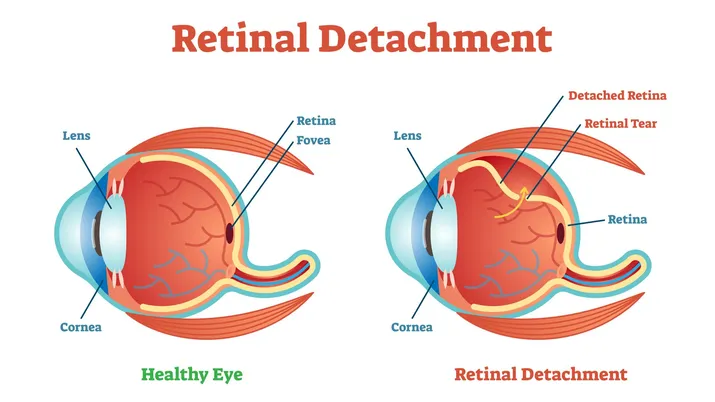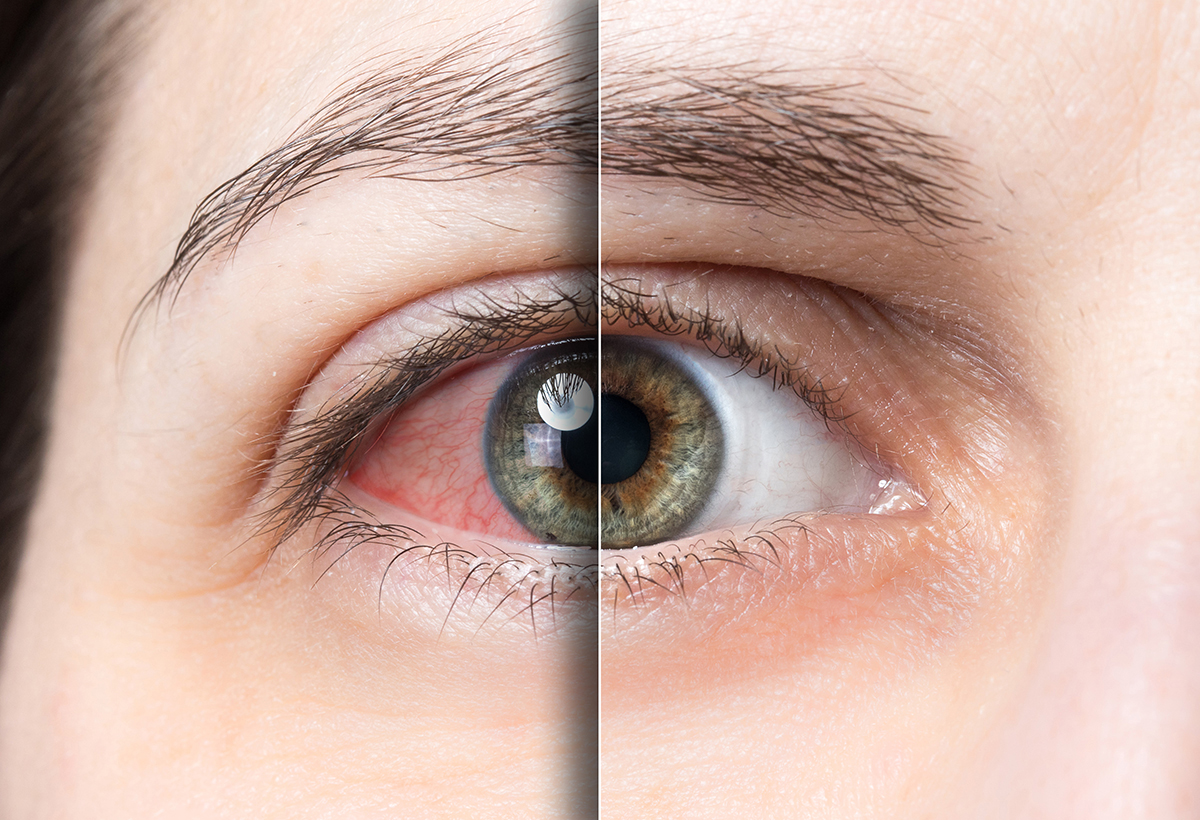Several common retinal disorders can affect the health and function of the retina. Here are some of the most prevalent ones:
- Age-Related Macular Degeneration (AMD):
AMD is a leading cause of vision loss in individuals over the age of 50. It affects the macula, the central part of the retina responsible for detailed vision. AMD can be classified as “dry” (characterized by the gradual breakdown of light-sensitive cells) or “wet” (involving abnormal blood vessel growth beneath the retina). - Diabetic Retinopathy:
Diabetic retinopathy is a complication of diabetes that affects the blood vessels in the retina. It can cause damage to blood vessels, leakage, swelling, and in some cases, abnormal blood vessel growth. Diabetic retinopathy can lead to vision impairment or blindness if not managed. - Retinal Detachment:
Retinal detachment occurs when the retina becomes separated from the underlying tissue. It can cause sudden vision loss or a “curtain-like” effect across the field of vision. Immediate medical attention is needed to prevent permanent vision loss. - Retinal Tears and Holes:
These occur when the retina’s tissue becomes torn or develops a hole. They can lead to retinal detachment if not addressed promptly. - Retinal Vein Occlusion (RVO) and Artery Occlusion (RAO):
RVO involves the blockage of retinal veins, while RAO involves the blockage of retinal arteries. These conditions can cause sudden vision loss due to reduced blood flow to the retina. - Macular Holes:
A macular hole is a small break or tear in the central macula. It can lead to distorted or blurry central vision. - Epiretinal Membrane (Macular Pucker):
An epiretinal membrane is a thin layer of scar tissue that forms on the surface of the retina. It can cause visual distortion and blurriness. - Retinitis Pigmentosa (RP):
RP is a group of inherited disorders that cause the gradual degeneration of the light-sensitive cells in the retina, leading to progressive vision loss and difficulty seeing at night. - Central Serous Retinopathy (CSR):
CSR is characterized by the accumulation of fluid beneath the retina’s central portion, leading to distorted or blurred central vision. - Choroidal Neovascularization (CNV):
CNV is the growth of abnormal blood vessels beneath the retina and can occur in conditions like AMD, causing vision impairment. - Hypertensive Retinopathy:
This condition occurs due to high blood pressure affecting the blood vessels in the retina, potentially leading to vision changes.
Each of these retinal disorders has its own unique causes, symptoms, and treatments. If you experience changes in your vision or have concerns about your retina, it’s important to consult an eye care professional or retinal specialist for proper diagnosis and appropriate management. Early detection and treatment can significantly improve the outcomes of retinal disorders.
Now you can reach our Dr. Sonia Maheshwari, the Best Retina Specialist in Ghatkopar, practicing at Clear Sight Eye Care and Laser Center.




